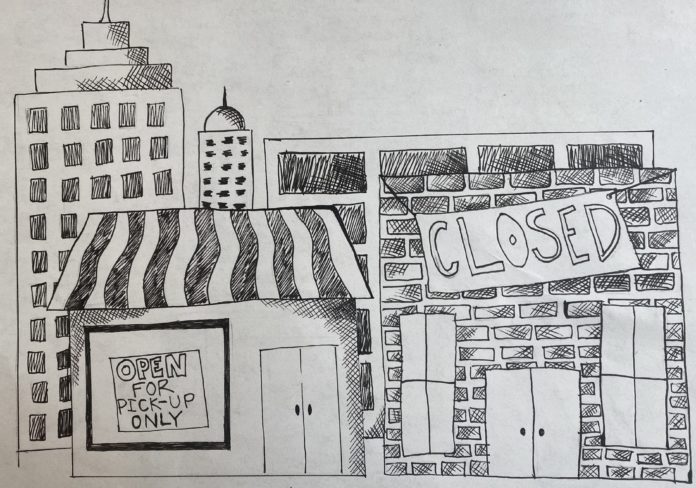Quarantine has taken a toll on almost everyone. Much of the country has been shut down for weeks or longer, and for some people tensions are running high. In states such as Michigan, California and Texas, protesters gathered to show their displeasure with lock downs and closures. Some believe the pandemic is a hoax aimed at stripping away personal freedoms or forcing President Trump out of office. Others either downplay the risks or claim they’re willing to accept them. The chance of death, it seems, is preferable to life without haircuts.
The frustration (at least from the people that acknowledge the pandemic and its risks) is not unjustified. More than 26 million Americans filed for unemployment in the past two months, and the bills are piling up. The $1,200 stimulus check provided help for many, but also left out entire groups of people such as adults claimed as dependents on tax returns (i.e. many college students). Technical snafus have delayed disbursement of the checks to many others. As this crisis drags on, $1,200 simply isn’t enough.
Businesses are also struggling. Closures are eating into revenue, and the federal government’s $350 billion small business loan program went broke within two weeks. Something needs to be done to keep families and businesses afloat as the pandemic continues to batter the country. Protesting to reopen states is not what’s going to make that happen.
What these protesters either don’t realize or don’t care about is the effect their gatherings may have on others. In March, Dr. Hugh Montgomery of the University College London estimated each person carrying the coronavirus would pass it to 3 other people on average, compared to 1.3 or 1.4 for the common flu. It’s a small change, but it makes a tremendous difference. After 10 cycles, the model produces 14 new infections of the flu versus 59,000 from the coronavirus.
The World Health Organization’s statistics are a little more generous, estimating each person infected with the virus passes it on to 2 to 2.5 people on average, but that’s still more than 1,000 infections after 10 cycles on the low end.
This means anti-quarantine protesters with their large, tightly-packed crowds are putting, not just themselves, but everyone they come in contact with and thousands of people they may never meet at an elevated risk. Add in to this equation that the coronavirus can be transmitted long before an infected person begins to show symptoms, and you have a recipe for the world’s most morbid game of Six Degrees of Kevin Bacon. Perhaps the protesters should swap their “give me liberty or give me death,” signs for something more honest. Lord Farquaad’s “some of you may die, but it’s a sacrifice I’m willing to make,” line from Shrek would be a good fit.
Stay-at-home orders, social distancing, closing nonessential businesses: these aren’t overreactions. They’re preventative measures with life-or-death consequences. The United States has the highest number of known cases and confirmed deaths from COVID-19 even as the per-capita testing rate is only just catching up to leading countries. As of April 26, more than 55,000 people have died from COVID-19 in the United States. New York City alone has suffered more than four times more fatalities than it did in the 9/11 terrorist attacks, and that doesn’t include probable cases where the victim was never tested.
The end of this outbreak may finally be on the horizon, now is not the time to ruin it. After an April 15 protest, Michigan Governor Gretchen Whitmer called the demonstration “the worst thing that could have happened,” and “the kind of behavior that extends the need for a stay-at-home order.” In the face of a global crisis which has killed more than 55,000 Americans, which requires sacrifices from all of us to end as quickly and safely as possible, these public tantrums will only make the situation worse for everyone.






